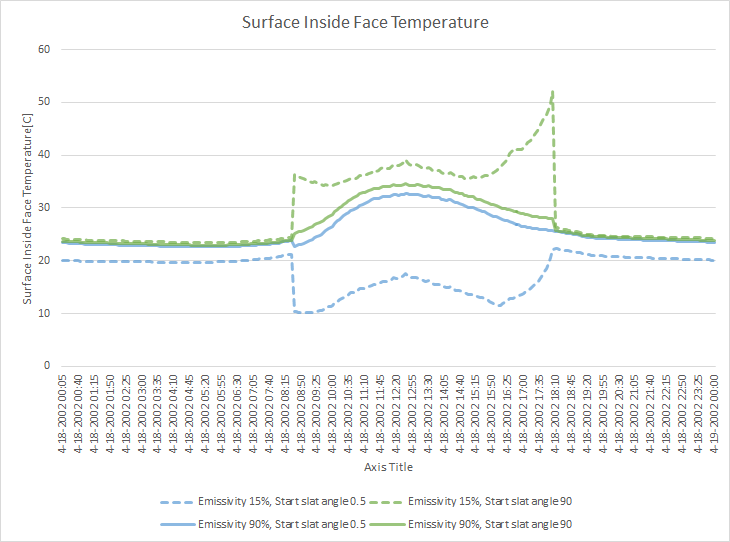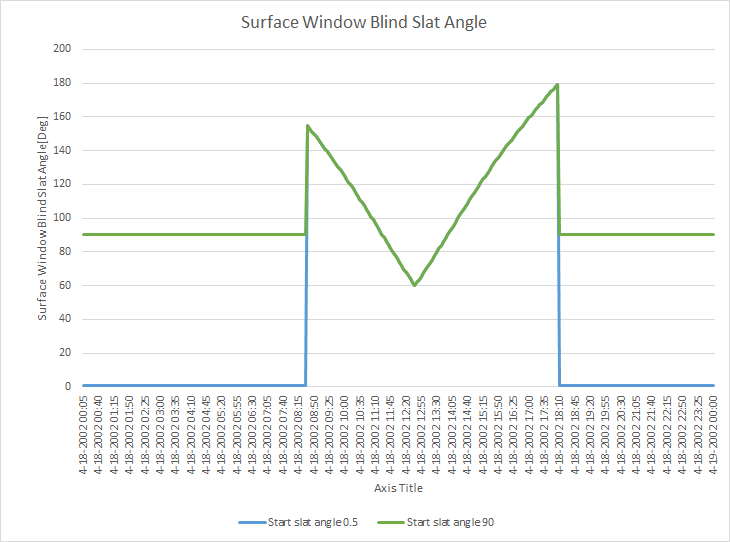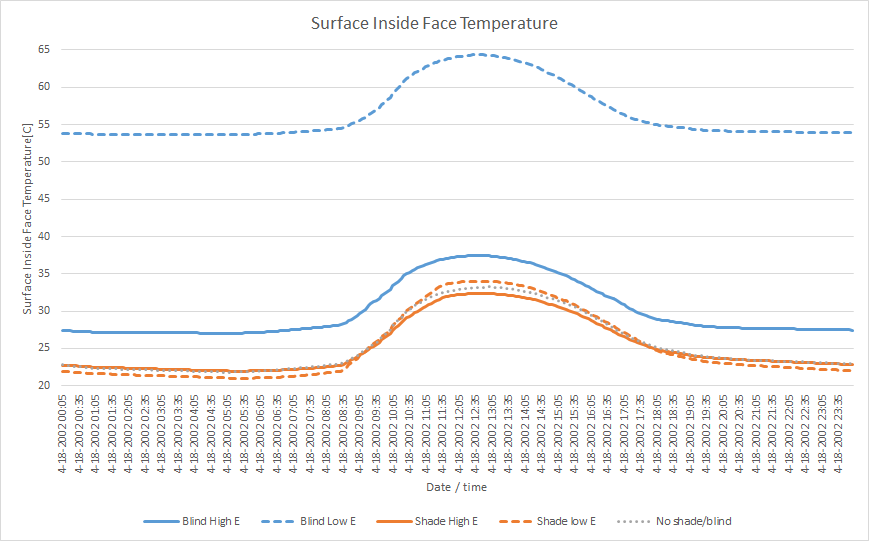Problem with low emissivity blinds
Hi,
I am having problems with modelling low-emissivity blinds in Energyplus using the WindowMaterial:Blind object. I am trying to model vertical blinds made of a fabric with a metalized coating on the window facing side which increases solar/visual reflectance and decreases it’s IR-emissivity (see these product specifications as an example). When I use low IR-emissivity values I get results which are peculiar. I have tested the low-E blinds using a multitude of control strategies (fixed, blockBeamSolar, custom EMS scripts). All of them give unexpected results. In short; depending on what I enter under Slat Angle within the WindowMaterial:Blind object I get either extremely low or extremely high surface temperatures for the blinds (and as a result extremely high radiative and convective exchange and resulting cooling/heating). The strangest thing is that the Slat Angle input even has this effect in cases where the input should not even be used by EP, such as when I overwrite the it using EMS (both when actuating window shading control as well as when actuating through a schedule).
The pictures below shows this effect. These simulations follow the blockBeamSolar control strategy without any EMS scripts. In the middle of the day the initial slat angle should not have any effect whatsoever as blockBeamSolar only uses it when there is no beam solar. Yet its input value is causing the blind to be extremely cold or hot (zone air temp is 20-25).
Idf files corresponding with these images: 0.5 degree slat angle and 90 degree slat angle.


I also compared the blinds to a windowMaterial:Shade with ‘similar’ properties (for as far as that is possible as the shades properties are not angularly dependent) both fully closed positions. I believe that outputting surface temperature with windowMaterial:Shade might actually output the glass inside temperature and not the effective temperature like in the blinds model. Nonetheless the differences between results shouldn’t be as large as they are. The increased temperature at the start in these runs is because the blinds have been closed throughout the warmup period. Here too the picture completely changes when I edit the Slat Angle in WindowMaterial:Blind.

I am modelling the low-emissivity blinds as having with a low emissivity on both sides (see reason below). I have also tried modelling them with low-E on the front and regular at the back.
I am using EnergyPlus 8.5. I know that with complex fenestration states in EP 8.5, assymetrical emmissivities can give bugs. Therefore I retried similar studies in 8.9 (just in case these bugs also apply to the regular blinds model). All give the same results.
I tried varying sets of material properties. Only the low ir-emissivity ones give these strange results.
The models that I use give plausible results when simulating with regular emissivity. Although the slight dip/rise depending on ‘slat anlgle in WindowMaterial:Blind’ seen in the first figure does occur in a time of the day where this input ...




Lots of information here. lt would be helpful to focus on one or two issues first (e.g. low-e causing strange temperatures, and initial slat angle impacting results when it shouldn't). Please post a set of idf files which illustrate this, preferably with no EMS.
@Samuel de Vries I would suspect EMS. Try two simulations one for morning till noon and the other for afternoon both with blockBeamSolar strategy, see what you get.
@MJWitte Uploaded the IDFs (see links in question) for the case without EMS (low and high starting slat angle)
Investigation so far shows that there's some lingering after-effect from the overnight hours where the two cases have the blinds at different angles until the sun comes round and the block beam control kicks in. If you change the blind control from AlwaysOn to OnIfHighSolarOnWindow with a setpoint of 100, then the results are identical with starting angle of 0.5 and 90. If you change the setpoint to 10 so that the blinds deploy with different angles for just a few hours then the big difference shows up again. Something seems to be amiss, but the starting angle may not be the real reason.
New issue #6952 posted.